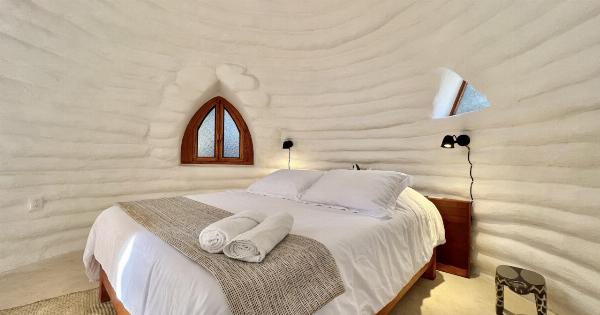As travel becomes increasingly accessible and people take vacations and business trips more frequently, one often overlooked concern is the cleanliness and hygiene of hotel rooms.
While hotels strive to maintain a clean and welcoming environment for their guests, a recent study conducted by a renowned microbiologist has uncovered some truly alarming findings. In this article, we delve into the shocking truth about germs in hotels that every traveler should be aware of.
1. The Most Infected Surfaces in Hotel Rooms
Upon testing various surfaces in hotel rooms, the study revealed that some commonly touched areas are breeding grounds for bacteria and other harmful microorganisms. The most heavily contaminated surfaces include:.
- Remote controls
- Light switches
- Doorknobs
- Desk surfaces
- Bedside tables
These surfaces often go unnoticed by cleaning staff and are rarely disinfected thoroughly, making them high-risk areas for potential infections.
2. The Invisible Threat of Bedding and Towels
While hotels may appear to provide clean bedding and towels, the study revealed that this may not always be the case. Several samples taken from hotel sheets and pillowcases showed traces of fungi, bacteria, and even fecal matter.
Similarly, towels were found to carry a significant amount of bacteria, including E. coli and MRSA. It is essential for hotels to adopt stricter laundry practices to ensure the removal of these harmful microbes.
3. The Unsanitary State of Bathroom Surfaces
Bathrooms in hotel rooms are often celebrated for their cleanliness, but the study uncovered a different reality.
High-touch surfaces in hotel bathrooms, such as faucet handles, toilet flush buttons, and showerheads, were found to be teeming with bacteria and other pathogens. Regular and thorough disinfection of these surfaces is crucial to minimize the risk of infection for guests.
4. The Hidden Dangers of Hotel Carpets and Upholstery
Carpets and upholstery in hotel rooms harbor a wide range of germs and allergens that can easily trigger respiratory issues and allergic reactions. Dust mites, mold spores, bacteria, and even viruses were found embedded in these surfaces.
Vacuuming alone is often insufficient to eliminate these harmful agents, necessitating specialized cleaning and maintenance techniques.
5. The Alarming Presence of Superbugs
In recent years, the rise of antimicrobial resistance has become a global concern.
The study found evidence of superbugs, such as Methicillin-resistant Staphylococcus aureus (MRSA) and vancomycin-resistant enterococci (VRE), in a startling number of hotel rooms tested. This poses not only a risk to the guests but also a potential for these pathogens to spread beyond the hotel’s premises.
6. The Importance of Proper Cleaning and Disinfection Practices
With the disturbing findings of the study, it is clear that hotels must prioritize stringent cleaning and disinfection practices to safeguard their guests’ health.
Regular training of cleaning staff, the use of effective disinfectants, and attention to high-touch surfaces are essential steps in preventing the spread of germs within hotels.
7. How Travelers Can Protect Themselves
While hotels play a significant role in maintaining cleanliness, travelers can take proactive steps to protect themselves from harmful germs:.
- Pack and use antibacterial wipes to clean commonly touched surfaces in hotel rooms.
- Carry a small bottle of hand sanitizer and use it frequently.
- Keep personal belongings off the floor or any potentially contaminated surfaces.
- Avoid direct contact with bedding and towels, if possible, by using disposable covers or requesting fresh linens.
- Be cautious when using hotel amenities and consider bringing your own toiletries when feasible.
8. The Future of Clean Hotels
As awareness grows regarding the potential health risks posed by unsanitary hotel conditions, the hospitality industry is beginning to adapt.
Some hotels are implementing innovative cleaning technologies, such as UV disinfection robots and antimicrobial coatings on high-touch surfaces. These advancements aim to provide guests with a cleaner and safer environment during their stay.
9. Conclusion: A Wake-Up Call for Hotels and Travelers
The shocking findings of the microbiologist’s study serve as a wake-up call for the hotel industry and travelers alike.
While hotels should make concerted efforts to maintain cleanliness and adopt stringent hygiene practices, travelers must also be aware of the potential risks and take necessary precautions to protect themselves from harmful germs. By working together, we can ensure a healthier and more hygienic travel experience for all.






























